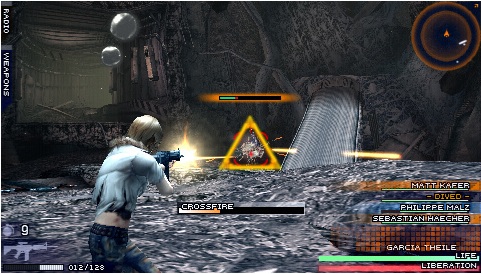


Her husband, Oliver Kerscher, is also a biologist at William & Mary. It’s work that marks the first confirmation of Gongylonema infection in a human by molecular methods.Įsquela-Kerscher is Allen’s neighbor. Esquela-Kerscher verified Allen’s identification through DNA analysis, comparing a section of Buddy’s DNA to a database. Morphological identification is done by examination of characteristics unique to the species, much as one would use field marks and song to distinguish a cardinal from other birds. When Allen sat down at his microscope in his pajamas, he was able to identify Buddy morphologically. The collaborators also want to “go on a worm hunt,” to seek out other human infections by Buddy’s relatives. They want to sequence the entire Gongylonema pulchrum genome, something that hasn’t been done anywhere. Allen and Esquela-Kerscher are extending their work, funded by one of the 10 grants awarded by William & Mary and EVMS to foster collaboration among the faculties of the two institutions. The collaborators suspect that Gongylonema pulchrum infection in humans might be substantially more common than the medical literature reflects. The journal article omits a minor point: The worm’s name is Buddy. Their paper was published in the American Journal of Tropical Medicine and Hygiene. Cancer Research Center at Eastern Virginia Medical School. to be infected with Gongylonema pulchrum, a distinction noted in “ Gongylonema pulchrum Infection in a Resident of Williamsburg, Virginia, Verified by Genetic Analysis,” a paper co-authored by Allen and Aurora Esquela-Kerscher of the Department of Microbiology and Molecular Cell Biology in the Leroy T. In fact, Allen is only the 13th known human in the U.S. The specimen turned out to be a nematode known as Gongylonema pulchrum, a member of a genus of parasites that are more often found in livestock than people. Once he got the worm out of his mouth, Allen did what any good scientist would do: He inserted the worm, alive, intact and still wriggling, into a jar of his own saliva and headed for the lab.Īllen arrived at William & Mary’s Integrated Science Center when it was still dark and he was still in his pajamas. The rough areas seemed to migrate around his mouth and Allen, whose specialty is invertebrate biology, suspected that he might have been harboring an unwanted invertebrate guest. Allen returned to the bathroom with a pair of #5 super-fine-tip forceps, drew a deep breath, and carefully fished a three-quarter-inch long parasitic worm out of his own mouth.Īllen, an assistant professor in William & Mary’s Department of Biology, had been experiencing “intermittent rough areas” that he could feel with his tongue. He was up anyway, having taken his young son back to bed after a trip to the bathroom. Early one morning in December, Jon Allen had decided that enough was enough.


 0 kommentar(er)
0 kommentar(er)
